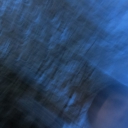Hi,
This is a very simple adsr-parameter to array conversion patch for monitoring purposes. It can handle two stage decay addsr too. All parameters are within a 0-1 range. It would be amazing to be able to output new lists from array editing, but this would mean some kind of index change detection. However, I like it as is and hope someone finds it useful.
-
Arrays & adsr env (struct/canvases)
-
Two more versions. The first one only adds the lateral restriction to graph-adsr-v2 while keeping the minimalism. The second is a kind of hybrid between the last two postings.
-
@katz very nice, now the question is "do you prefer 3 nodes or 4?"
-
Does anybody know where I can find a reference/documentation for the arguments in brackets for [filledcurve]?
I'd love to be able to adapt the patch for an 8 stage envelope but it's much too advanced for my skills.
-
very nice how the adsr patch developed during this thread

-
@Balwyn I like this envelope you posted a lot, and is very close to something I'd like to develop. Do you think that would be possible to restrict the x range of the nodes so that for example the decay node is never to the left of the attack node (if that makes sense), and how would one go about implementing it? Thanks a lot
-
@weightless, Hi, actually @katz has already done the restriction stuff in adsr-g2,zip earlier in this thread but here it is again separated out and with some additional attribute messages.
graph-adsr-v2.15.zip -
Oh! and in my vanillaness at the time I changed zexy/drip and zexy/demux to some Pd code alternative
-
@Balwyn Thank you SO much, this is just great. It's ready to use as-is but I'll study it and try to understand how it works, and see if it can be adapted to do have more segments. It's a very instructive patch for dealing with these node constraints, and I love the vanillaness about it

Thanks again for sharing it.
-
Here is another kind of array object (no structs this time) with free point plotting and curve transitions. There are two layers in the GOP box: the layer with the canvas points and one below with an array-table and a resized slider in front to block mouse interaction.


